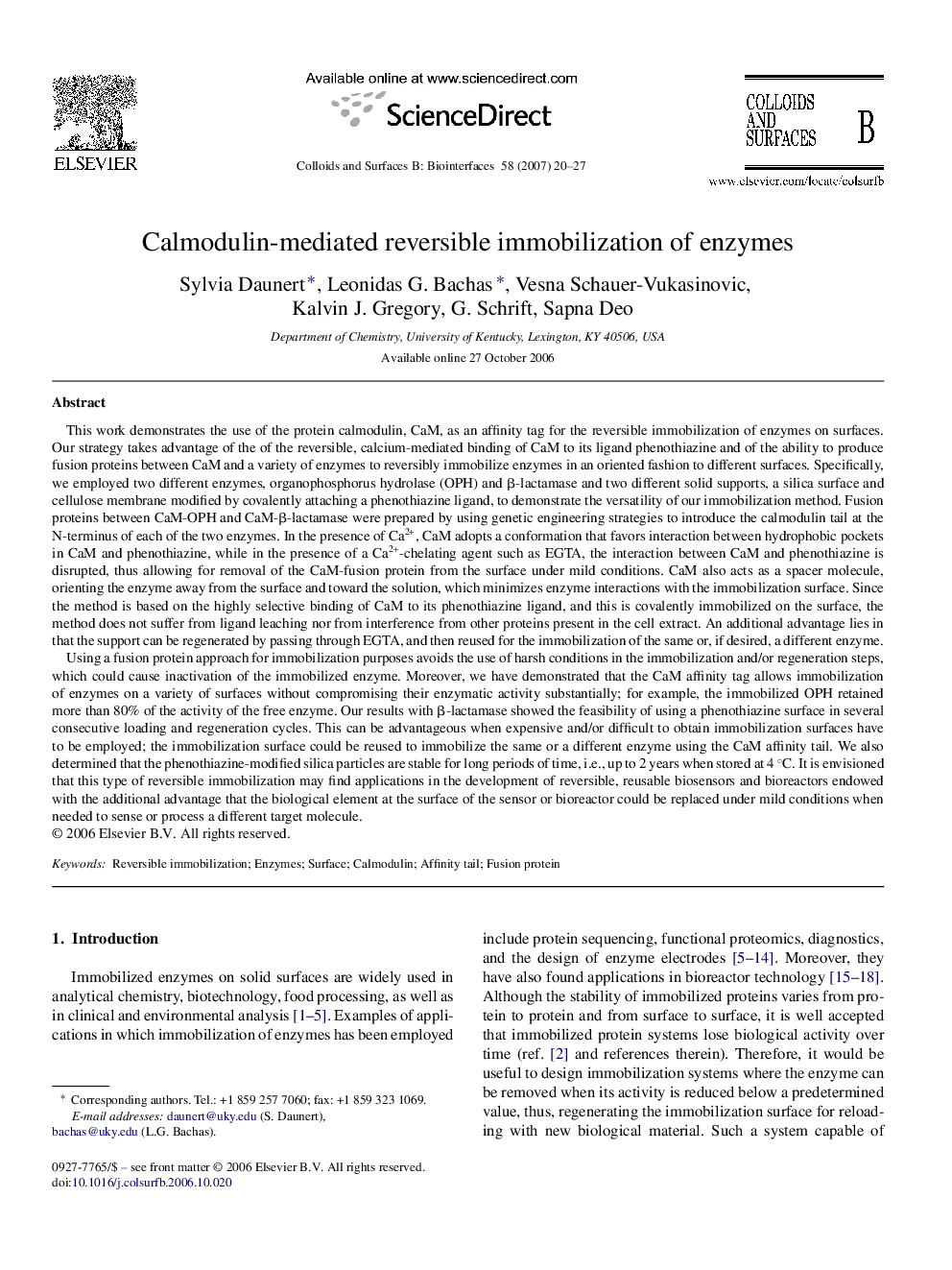| کد مقاله | کد نشریه | سال انتشار | مقاله انگلیسی | نسخه تمام متن |
|---|---|---|---|---|
| 602967 | 880004 | 2007 | 8 صفحه PDF | دانلود رایگان |

This work demonstrates the use of the protein calmodulin, CaM, as an affinity tag for the reversible immobilization of enzymes on surfaces. Our strategy takes advantage of the of the reversible, calcium-mediated binding of CaM to its ligand phenothiazine and of the ability to produce fusion proteins between CaM and a variety of enzymes to reversibly immobilize enzymes in an oriented fashion to different surfaces. Specifically, we employed two different enzymes, organophosphorus hydrolase (OPH) and β-lactamase and two different solid supports, a silica surface and cellulose membrane modified by covalently attaching a phenothiazine ligand, to demonstrate the versatility of our immobilization method. Fusion proteins between CaM-OPH and CaM-β-lactamase were prepared by using genetic engineering strategies to introduce the calmodulin tail at the N-terminus of each of the two enzymes. In the presence of Ca2+, CaM adopts a conformation that favors interaction between hydrophobic pockets in CaM and phenothiazine, while in the presence of a Ca2+-chelating agent such as EGTA, the interaction between CaM and phenothiazine is disrupted, thus allowing for removal of the CaM-fusion protein from the surface under mild conditions. CaM also acts as a spacer molecule, orienting the enzyme away from the surface and toward the solution, which minimizes enzyme interactions with the immobilization surface. Since the method is based on the highly selective binding of CaM to its phenothiazine ligand, and this is covalently immobilized on the surface, the method does not suffer from ligand leaching nor from interference from other proteins present in the cell extract. An additional advantage lies in that the support can be regenerated by passing through EGTA, and then reused for the immobilization of the same or, if desired, a different enzyme.Using a fusion protein approach for immobilization purposes avoids the use of harsh conditions in the immobilization and/or regeneration steps, which could cause inactivation of the immobilized enzyme. Moreover, we have demonstrated that the CaM affinity tag allows immobilization of enzymes on a variety of surfaces without compromising their enzymatic activity substantially; for example, the immobilized OPH retained more than 80% of the activity of the free enzyme. Our results with β-lactamase showed the feasibility of using a phenothiazine surface in several consecutive loading and regeneration cycles. This can be advantageous when expensive and/or difficult to obtain immobilization surfaces have to be employed; the immobilization surface could be reused to immobilize the same or a different enzyme using the CaM affinity tail. We also determined that the phenothiazine-modified silica particles are stable for long periods of time, i.e., up to 2 years when stored at 4 °C. It is envisioned that this type of reversible immobilization may find applications in the development of reversible, reusable biosensors and bioreactors endowed with the additional advantage that the biological element at the surface of the sensor or bioreactor could be replaced under mild conditions when needed to sense or process a different target molecule.
Journal: Colloids and Surfaces B: Biointerfaces - Volume 58, Issue 1, 1 July 2007, Pages 20–27